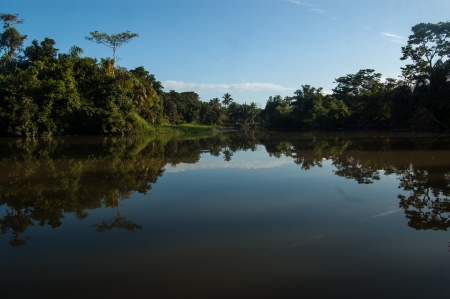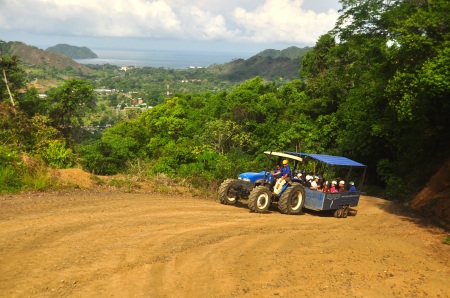Robert here, with a short article on how to lower your carbon footprint – including some ideas and fresh takes. The UN has created a program where individuals or companies can contribute to Carbon Offset Credits to help limit the worldwide total of carbon emissions. Their website is https://offset.climateneutralnow.org/.
This platform features UNFCCC certified projects that reduce, avoid or remove greenhouse gas emissions from the atmosphere.
The projects are implemented in developing countries and are rewarded with Certified Emission Reductions (CERs), a type of carbon offset measured in tonnes of CO2 equivalent. The CERs are available for everyone to purchase to offset emissions or in support of the projects. The full contributions go directly to the projects.
In 2007, under the leadership of then Secretary-General Ban Ki-moon, at a meeting of the UN System Chief Executives Board for Coordination (CEB), the Executive Heads of UN agencies, funds, and programs committed to moving their respective organizations towards climate neutrality, and developed the UN Climate Neutral Strategy.
Specifically, they committed to:
- Estimate the greenhouse gas emissions of UN system organizations consistent with accepted international standards;
- Undertake efforts to reduce greenhouse gas emissions;
- Analyze the cost implications and explore budgetary modalities of purchasing carbon offsets to eventually reach climate neutrality.
The UN Climate Neutral Strategy highlights the advantages of harmonization. A common approach across the UN system brings greater impact, lowers transaction costs, facilitates practical action on the ground through the development of common tools, ensures comparability of data across organizations, and pooling of results for better-informed decisions and knowledge-sharing. See https://www.un.org/en/sections/general/un-and-sustainability/.
How can I find out what my Carbon Footprint is?
Use the calculator at this site: https://offset.climateneutralnow.org/landingpage_ind_6?utm_source=facebook&utm_medium=ad&utm_content=ed_norton&utm_campaign=calc+footprint+lp
Some updates from the world of responsible travel:
Responsible Eco-Tourism encouraged. “…for outdoor recreation, it’s important to remember that walking or biking to a destination rather than driving can reduce the carbon footprint of a visit…”
Four Ways to Reduce Your Carbon Footprint. “Four actions can help you travel with a lower carbon footprint:
- Travel light;
- Go direct and stay longer;
- Choose your airplane carefully; and
- Travel by Train.
The article also recommends traveling by train specifically in The Netherlands, Japan, Toronto and Norway, which have electric or completely carbon-neutral sources of energy powering travel in those countries.
How Instagram Influencers are Ruining Small Towns:
“While the travel muse that is Instagram may be fantastic news for Philippine economic development, the truth is that it doesn’t have the infrastructure to accommodate a leap in tourism. Instagram’s persistent global reach creates a constant influx of tourists and influencers and a nightmare for island nations such as the Philippines.”
“Mindful tourism is under the umbrella of sustainable tourism, which hasn’t quite been attained. If we want to attain a future where sustainable tourism is the norm, we must start with ourselves. Trying to minimize our tourist footprint is a selfless act that will benefit our collective travel experiences as humans.”
UN Environmental Agencies walk the walk when it comes to Carbon Neutrality
“Carbon neutrality, or having a net-zero carbon footprint, refers to achieving net-zero carbon emissions by balancing a measured amount of carbon released with an equivalent amount sequestered or offset.
In 2007, the United Nations principals endorsed the UN Climate Neutral Strategy asking each UN entity to measure, reduce and offset their unavoidable Greenhouse Gas emissions. UN Environment was given the task by the UN Secretary-General to lead the UN system in implementing the strategy. The Sustainable United Nations Initiative was then created to develop methodologies, coordinate inter-agency action and catalyze United Nations-wide efforts to mitigate and offset its climate footprint and practice greener operations.
Carbon dioxide emissions account for 82 percent of global warming, with the rest coming mainly from the much more potent greenhouse gases methane and nitrous oxide.”



 Although there are more detailed ecotourism definitions, basically, ecotourism is this – it is environmentally friendly travel.
Although there are more detailed ecotourism definitions, basically, ecotourism is this – it is environmentally friendly travel.


 Animal rescue… tapirs are cared for at La MarinaWildlife Rescue Centre. Photo: Jane Mundy
Animal rescue… tapirs are cared for at La MarinaWildlife Rescue Centre. Photo: Jane Mundy
